Molecule-to-Material-to-Bio Nanoarchitectonics with Biomedical Fullerene Nanoparticles
Abstract
:1. Introduction: Nanoarchitectonics for Molecules, Materials, and Biofunctions
2. Nano in Basic Biology
3. Nano in Bio-Related Applications
4. Fullerene Assemblies Performing Functions
5. Biomedical Fullerene Nanoparticles
5.1. Fullerene Nanoparticles for Biosensing and Fluorophore Reporting
5.2. Fullerene Nanoparticles as Gene Delivery Vehicles
5.3. Fullerene Nanoparticles as Radical Scavengers
6. Summary and Future Perspectives
Author Contributions
Funding
Data Availability Statement
Conflicts of Interest
References
- Guo, D.; Shibuya, R.; Akiba, C.; Saji, S.; Kondo, T.; Nakamura, J. Active sites of nitrogen-doped carbon materials for oxygen reduction reaction clarified using model catalysts. Science 2016, 351, 361–365. [Google Scholar] [CrossRef] [PubMed]
- Lang, X.; Gopalan, S.; Fu, W.; Ramakrishna, S. Photocatalytic water splitting utilizing electrospun semiconductors for solar hydrogen generation: Fabrication, modification and performance. Bull. Chem. Soc. Jpn. 2021, 94, 8–20. [Google Scholar] [CrossRef]
- Ray, A.; Saruhan, B. Application of ionic liquids for batteries and supercapacitors. Materials 2021, 14, 2942. [Google Scholar] [CrossRef] [PubMed]
- Yoshino, A. The lithium-ion battery: Two breakthroughs in development and two reasons for the Nobel Prize. Bull. Chem. Soc. Jpn. 2022, 95, 195–197. [Google Scholar] [CrossRef]
- Sarker, A.; Deepo, D.M.; Nandi, R.; Rana, J.; Islam, S.; Rahman, S.; Hossain, M.N.; Islam, M.S.; Baroi, A.; Kim, J.-E. A review of microplastics pollution in the soil and terrestrial ecosystems: A global and Bangladesh perspective. Sci. Total Environ. 2020, 733, 139296. [Google Scholar] [CrossRef]
- Yuan, G.; Li, F.; Li, K.; Liu, J.; Li, J.; Zhang, S.; Jia, Q.; Zhang, H. Research progress on photocatalytic reduction of Cr(VI) in polluted water. Bull. Chem. Soc. Jpn. 2021, 94, 1142–1155. [Google Scholar] [CrossRef]
- Martínez, G.; Merinero, M.; Pérez-Aranda, M.; Pérez-Soriano, E.M.; Ortiz, T.; Villamor, E.; Begines, B.; Alcudia, A. Environmental impact of nanoparticles’ application as an emerging technology: A review. Materials 2021, 14, 166. [Google Scholar] [CrossRef]
- Chapman, A.; Kubota, E.M.; Nagao, A.; Bertsch, K.; Macadre, A.; Tsuchiyama, T.; Masamura, T.; Takaki, S.; Komoda, R.; Dadfarnia, M.; et al. Achieving a carbon neutral future through advanced functional materials and technologies. Bull. Chem. Soc. Jpn. 2022, 95, 73–103. [Google Scholar] [CrossRef]
- Kobayashi, J.; Kikuchi, A.; Aoyagi, T.; Okano, T. Cell sheet tissue engineering: Cell sheet preparation, harvesting/manipulation, and transplantation. J. Biomed. Mater. Res. Part A 2019, 107, 955–967. [Google Scholar] [CrossRef]
- Parthiban, V.; Yen, P.Y.M.; Uruma, Y.; Lai, P.-S. Designing synthetic glycosylated photosensitizers for photodynamic therapy. Bull. Chem. Soc. Jpn. 2020, 93, 978–984. [Google Scholar] [CrossRef]
- Salmi, M. Additive Manufacturing processes in medical applications. Materials 2021, 14, 191. [Google Scholar] [CrossRef]
- Benu, D.P.; Earnshaw, J.; Ashok, A.; Tsuchiya, K.; Saptiama, I.; Yuliarto, B.; Suendo, V.; Mukti, R.R.; Fukumitsu, N.; Ariga, K.; et al. Mesoporous alumina-titania composites with enhanced molybdenum adsorption towards medical radioisotope production. Bull. Chem. Soc. Jpn. 2021, 94, 502–507. [Google Scholar] [CrossRef]
- Segawa, Y.; Kuwayama, M.; Hijikata, Y.; Fushimi, M.; Nishihara, T.; Pirillo, J.; Shirasaki, J.; Kubota, N.; Itami, K. Topological molecular nanocarbons: All-benzene catenane and trefoil knot. Science 2019, 365, 272–276. [Google Scholar] [CrossRef]
- Gu, Q.; Wu, Z.-J.; You, S.-L. Recent advances in enantioselective direct C-H addition to carbonyls and Michael acceptors. Bull. Chem. Soc. Jpn. 2021, 94, 641–647. [Google Scholar] [CrossRef]
- Nakao, Y. Metal-mediated C–CN bond activation in organic synthesis. Chem. Rev. 2021, 121, 327–344. [Google Scholar] [CrossRef]
- Anderson, H.L.; Patrick, C.W.; Scriven, L.M.; Woltering, S.I. A short history of cyclocarbons. Bull. Chem. Soc. Jpn. 2021, 94, 798–811. [Google Scholar] [CrossRef]
- Chaikittisilp, W.; Torad, N.L.; Li, C.; Imura, M.; Suzuki, N.; Ishihara, S.; Ariga, K.; Yamauchi, Y. Synthesis of nanoporous carbon–cobalt-oxide hybrid electrocatalysts by thermal conversion of metal–organic frameworks. Chem. Eur. J. 2014, 20, 4217–4221. [Google Scholar] [CrossRef]
- Singh, G.; Lee, J.M.; Kothandam, G.; Palanisami, T.; Al-Muhtaseb, A.H.; Karakoti, A.; Yi, J.; Bolan, N.; Vinu, A. A review on the synthesis and applications of nanoporous carbons for the removal of complex chemical contaminants. Bull. Chem. Soc. Jpn. 2021, 94, 1232–1257. [Google Scholar] [CrossRef]
- López-Salas, N.; Antonietti, M. Carbonaceous materials: The beauty of simplicity. Bull. Chem. Soc. Jpn. 2021, 94, 2822–2828. [Google Scholar] [CrossRef]
- Kusada, K.; Kitagawa, H. Continuous-flow syntheses of alloy nanoparticles. Mater. Horiz. 2022, 9, 547–558. [Google Scholar] [CrossRef]
- Hosono, N. Design of porous coordination materials with dynamic properties. Bull. Chem. Soc. Jpn. 2021, 94, 60–69. [Google Scholar] [CrossRef]
- Raptopoulou, C.P. Metal-organic frameworks: Synthetic methods and potential applications. Materials 2021, 14, 310. [Google Scholar] [CrossRef]
- Takezawa, H.; Fujita, M. Molecular confinement effects by self-assembled coordination cages. Bull. Chem. Soc. Jpn. 2021, 94, 2351–2369. [Google Scholar] [CrossRef]
- Kitagawa, S.; Kitaura, R.; Noro, S. Functional porous coordination polymers. Angew. Chem. Int. Ed. 2004, 43, 2334–2375. [Google Scholar] [CrossRef]
- Percec, V.; Xiao, Q. Helical self-organizations and emerging functions in architectures, biological and synthetic macromolecules. Bull. Chem. Soc. Jpn. 2021, 94, 900–928. [Google Scholar] [CrossRef]
- Mansour, D.-E.A.; Abdel-Gawad, N.M.K.; El Dein, A.Z.; Ahmed, H.M.; Darwish, M.M.F.; Lehtonen, M. Recent advances in polymer nanocomposites based on polyethylene and polyvinylchloride for power cables. Materials 2021, 14, 66. [Google Scholar] [CrossRef]
- Yashima, E.; Maeda, K. Helical polymers with dynamic and static macromolecular helicity memory: The power of helicity memory for helical polymer synthesis and applications. Bull. Chem. Soc. Jpn. 2021, 94, 2637–2661. [Google Scholar] [CrossRef]
- Ariga, K.; Ito, H.; Hill, J.P.; Tsukube, H. Molecular recognition: From solution science to nano/materials technology. Chem. Soc. Rev. 2012, 41, 5800–5835. [Google Scholar] [CrossRef]
- Datta, S.; Kato, Y.; Higashiharaguchi, S.; Aratsu, K.; Isobe, A.; Saito, T.; Prabhu, D.D.; Kitamoto, Y.; Hollamby, M.J.; Smith, A.J.; et al. Self-assembled poly-catenanes from supramolecular toroidal building blocks. Nature 2020, 583, 400–405. [Google Scholar] [CrossRef]
- Kato, T.; Gupta, M.; Yamaguchi, D.; Gan, K.P.; Nakayama, M. Supramolecular association and nanostructure formation of liquid crystals and polymers for new functional materials. Bull. Chem. Soc. Jpn. 2021, 94, 357–376. [Google Scholar] [CrossRef]
- Akutagawa, T. Chemical design and physical properties of dynamic molecular assemblies. Bull. Chem. Soc. Jpn. 2021, 94, 1400–1420. [Google Scholar] [CrossRef]
- Rai, A.; Hirakawa, H.; Nakabayashi, R.; Kikuchi, S.; Hayashi, K.; Rai, M.; Tsugawa, H.; Nakaya, T.; Mori, T.; Nagasaki, H.; et al. Chromosome-level genome assembly of Ophiorrhiza pumila reveals the evolution of camptothecin biosynthesis. Nat. Commun. 2021, 12, 405. [Google Scholar] [CrossRef] [PubMed]
- Vong, K.; Nasibullin, I.; Tanaka, K. Exploring and adapting the molecular selectivity of artificial metalloenzymes. Bull. Chem. Soc. Jpn. 2021, 94, 382–396. [Google Scholar] [CrossRef]
- Łabowska, M.B.; Cierluk, K.; Jankowska, A.M.; Kulbacka, J.; Detyna, J.; Michalak, I. A review on the adaption of alginate-gelatin hydrogels for 3D cultures and bioprinting. Materials 2021, 14, 858. [Google Scholar] [CrossRef]
- Podder, A.; Lee, H.J.; Kim, B.H. Fluorescent nucleic acid systems for biosensors. Bull. Chem. Soc. Jpn. 2021, 94, 1010–1035. [Google Scholar] [CrossRef]
- Ariga, K.; Mori, T.; Hill, J.P. Mechanical control of nanomaterials and nanosystems. Adv. Mater. 2012, 24, 158–176. [Google Scholar] [CrossRef]
- Yamashita, M. Next generation multifunctional nano-science of advanced metal complexes with quantum effect and nonlinearity. Bull. Chem. Soc. Jpn. 2021, 94, 209–264. [Google Scholar] [CrossRef]
- Shan, Y.; Chen, L.; Pang, H.; Xu, Q. Metal–organic framework-based hybrid frameworks. Small Struct. 2021, 2, 2000078. [Google Scholar] [CrossRef]
- Hosono, N.; Uemura, T. Development of functional materials via polymer encapsulation into metal-organic frameworks. Bull. Chem. Soc. Jpn. 2021, 94, 2139–2148. [Google Scholar] [CrossRef]
- Kimura, K.; Miwa, K.; Imada, H.; Imai-Imada, M.; Kawahara, S.; Takeya, J.; Kawai, M.; Galperin, M.; Kim, Y. Selective triplet exciton formation in a single molecule. Nature 2019, 570, 210–213. [Google Scholar] [CrossRef]
- Kratish, Y.; Nakamuro, T.; Liu, Y.; Li, J.; Tomotsuka, I.; Harano, K.; Nakamura, E.; Marks, T.J. Synthesis and characterization of a well-defined carbon nanohorn-supported molybdenum dioxo catalyst by SMART-EM imaging. Surface structure at the atomic level. Bull. Chem. Soc. Jpn. 2021, 94, 427–432. [Google Scholar] [CrossRef]
- Sakaushi, K. Science of electrode processes in the 21st century: Fundamental understanding of microscopic mechanisms towards advancing electrochemical technologies. Bull. Chem. Soc. Jpn. 2021, 94, 2423–2434. [Google Scholar] [CrossRef]
- Harano, K. Self-assembly mechanism in nucleation processes of molecular crystalline materials. Bull. Chem. Soc. Jpn. 2021, 94, 463–472. [Google Scholar] [CrossRef]
- Jung, T.A.; Schlittler, R.R.; Gimzewski, J.K.; Tang, H.; Joachim, C. Controlled room-temperature positioning of individual molecules: Molecular flexure and motion. Science 1996, 271, 181–184. [Google Scholar] [CrossRef]
- Soe, W.-H.; Srivastava, S.; Joachim, C. Train of single molecule-gears. J. Phys. Chem. Lett. 2019, 10, 6462–6467. [Google Scholar] [CrossRef]
- Xu, X.; Müllen, K.; Narita, A. Syntheses and characterizations of functional polycyclic aromatic hydrocarbons and graphene nanoribbons. Bull. Chem. Soc. Jpn. 2020, 93, 490–506. [Google Scholar] [CrossRef]
- Xu, X.; Kinikar, A.; Giovannantonio, M.D.; Ruffieux, P.; Müllen, K.; Fasel, R.; Narita, A. On-surface synthesis of dibenzohexacenohexacene and dibenzopentaphenoheptaphene. Bull. Chem. Soc. Jpn. 2021, 94, 997–999. [Google Scholar] [CrossRef]
- Kazuma, E. Real-space studies of plasmon-induced dissociation reactions with an STM. Bull. Chem. Soc. Jpn. 2020, 93, 1552–1557. [Google Scholar] [CrossRef]
- Kawai, S.; Sang, H.; Kantorovich, L.; Takahashi, K.; Nozaki, K.; Ito, S. An endergonic synthesis of single Sondheimer–Wong diyne by local probe chemistry. Angew. Chem. Int. Ed. 2020, 59, 10842. [Google Scholar] [CrossRef]
- Kawai, S.; Krejčí, O.; Nishiuchi, T.; Sahara, K.; Kodama, T.; Pawlak, R.; Meyer, E.; Kubo, T.; Foster, A.S. Three-dimensional graphene nanoribbons as a framework for molecular assembly and local probe chemistry. Sci. Adv. 2020, 6, eaay8913. [Google Scholar] [CrossRef] [Green Version]
- Feynman, R.P. There’s plenty of room at the bottom. Calif. Inst. Technol. J. Eng. Sci. 1960, 4, 23–36. [Google Scholar]
- Roukes, M. Plenty of room, indeed. Sci. Am. 2001, 285, 48–57. [Google Scholar] [CrossRef] [PubMed]
- Ariga, K.; Ji, Q.; Nakanishi, W.; Hill, J.P.; Aono, M. Nanoarchitectonics: A new materials horizon for nanotechnology. Mater. Horiz. 2015, 2, 406–413. [Google Scholar] [CrossRef]
- Ariga, K.; Ji, Q.; Hill, J.P.; Bando, Y.; Aono, M. Forming nanomaterials as layered functional structures toward materials nanoarchitectonics. NPG Asia Mater. 2012, 4, e17. [Google Scholar] [CrossRef] [Green Version]
- Ariga, K. Nanoarchitectonics: What’s coming next after nanotechnology? Nanoscale Horiz. 2021, 6, 364–378. [Google Scholar] [CrossRef]
- Ariga, K.; Minami, K.; Ebara, M.; Nakanishi, J. What are the emerging concepts and challenges in NANO? Nanoarchitectonics, hand-operating nanotechnology and mechanobiology. Polym. J. 2016, 48, 371–389. [Google Scholar] [CrossRef]
- Ariga, K. Nanoarchitectonics revolution and evolution: From small science to big technology. Small Sci. 2021, 1, 2000032. [Google Scholar] [CrossRef]
- Ariga, K.; Li, J.; Fei, J.; Ji, Q.; Hill, J.P. Nanoarchitectonics for dynamic functional materials from atomic-/molecular-level manipulation to macroscopic action. Adv. Mater. 2016, 28, 1251–1286. [Google Scholar] [CrossRef]
- Ariga, K. Progress in molecular nanoarchitectonics and materials nanoarchitectonics. Molecules 2021, 26, 1621. [Google Scholar] [CrossRef]
- Ramanathan, M.; Shrestha, L.K.; Mori, T.; Ji, Q.; Hill, J.P.; Ariga, K. Amphiphile nanoarchitectonics: From basic physical chemistry to advanced applications. Phys. Chem. Chem. Phys. 2013, 15, 10580–10611. [Google Scholar] [CrossRef]
- Tirayaphanitchkul, C.; Imwiset, K.; Ogawa, M. Nanoarchitectonics through organic modification of oxide based layered materials; concepts, methods and functions. Bull. Chem. Soc. Jpn. 2021, 94, 678–693. [Google Scholar] [CrossRef]
- Oaki, Y.; Sato, K. Nanoarchitectonics for conductive polymers using solid and vapor phases. Nanoscale Adv. 2022, 4, 2773–2781. [Google Scholar] [CrossRef]
- Ariga, K.; Mori, T.; Kitao, T.; Uemura, T. Supramolecular chiral nanoarchitectonics. Adv. Mater. 2020, 32, 1905657. [Google Scholar] [CrossRef] [PubMed]
- Ariga, K.; Shionoya, M. Nanoarchitectonics for coordination asymmetry and related chemistry. Bull. Chem. Soc. Jpn. 2021, 94, 839–859. [Google Scholar] [CrossRef]
- Ariga, K. Mechano-nanoarchitectonics: Design and function. Small Methods 2022, 6, 2101577. [Google Scholar] [CrossRef]
- Nayak, A.; Unayama, S.; Tai, S.; Tsuruoka, T.; Waser, R.; Aono, M.; Valov, I.; Hasegawa, T. Nanoarchitectonics for controlling the number of dopant atoms in solid electrolyte nanodots. Adv. Mater. 2018, 30, 1703261. [Google Scholar] [CrossRef]
- Wakayama, Y. On-surface molecular nanoarchitectonics: From self-assembly to directed assembly. Jpn. J. Appl. Phys. 2016, 55, 1102AA. [Google Scholar] [CrossRef]
- Eguchi, M.; Nugraha, A.S.; Rowan, A.E.; Shapter, J.; Yamauchi, Y. Adsorchromism: Molecular nanoarchitectonics at 2D nanosheets—Old chemistry for advanced chromism. Adv. Sci. 2021, 8, 2100539. [Google Scholar] [CrossRef]
- Howorka, S. DNA nanoarchitectonics: Assembled DNA at interfaces. Langmuir 2013, 29, 2344–7353. [Google Scholar] [CrossRef]
- Komiyama, M.; Yoshimoto, K.; Sisido, M.; Ariga, K. Chemistry can make strict and fuzzy controls for bio-systems: DNA nanoarchitectonics and cell-macromolecular nanoarchitectonics. Bull. Chem. Soc. Jpn. 2017, 90, 967–1004. [Google Scholar] [CrossRef] [Green Version]
- Liang, X.; Li, L.; Tang, J.; Komiyama, M.; Ariga, K. Dynamism of supramolecular DNA/RNA nanoarchitectonics: From interlocked structures to molecular machines. Bull. Chem. Soc. Jpn. 2020, 93, 581–603. [Google Scholar] [CrossRef]
- Khan, A.H.; Ghosh, S.; Pradhan, B.; Dalui, A.; Shrestha, L.K.; Acharya, S.; Ariga, K. Two-dimensional (2D) nanomaterials towards electrochemical nanoarchitectonics in energy-related applications. Bull. Chem. Soc. Jpn. 2017, 90, 627–648. [Google Scholar] [CrossRef]
- Kim, J.; Kim, J.H.; Ariga, K. Redox-active polymers for energy storage nanoarchitectonics. Joule 2017, 1, 739–768. [Google Scholar] [CrossRef] [Green Version]
- Liu, X.; Chen, T.; Xue, Y.; Fan, J.; Shen, S.; Hossain, M.S.A.; Amin, M.A.; Pan, L.; Xu, X.; Yamauchi, Y. Nanoarchitectonics of MXene/semiconductor heterojunctions toward artificial photosynthesis via photocatalytic CO2 reduction. Coord. Chem. Rev. 2022, 459, 214440. [Google Scholar] [CrossRef]
- Pandeeswar, M.; Senanayak, S.P.; Govindaraju, T. Nanoarchitectonics of small molecule and DNA for ultrasensitive detection of mercury. ACS Appl. Mater. Interfaces 2016, 8, 30362–30371. [Google Scholar] [CrossRef]
- Pham, T.-A.; Qamar, A.; Dinh, T.; Masud, M.K.; Rais-Zadeh, M.; Senesky, D.G.; Yamauchi, Y.; Nguyen, N.-T.; Phan, H.-P. Nanoarchitectonics for wide bandgap semiconductor nanowires: Toward the next generation of nanoelectromechanical systems for environmental monitoring. Adv. Sci. 2020, 7, 2001294. [Google Scholar] [CrossRef]
- Boukhalfa, N.; Darder, M.; Boutahala, M.; Aranda, P.; Ruiz-Hitzky, E. Composite nanoarchitectonics: Alginate beads encapsulating sepiolite magnetite/Prussian blue for removal of cesium ions from water. Bull. Chem. Soc. Jpn. 2021, 94, 122–132. [Google Scholar] [CrossRef]
- Pandey, A.P.; Girase, N.M.; Patil, M.D.; Patil, P.O.; Patil, D.A.; Deshmukh, P.K. Nanoarchitectonics in cancer therapy and imaging diagnosis. J. Nanosci. Nanotechnol. 2014, 14, 828–840. [Google Scholar] [CrossRef]
- Nakanishi, W.; Minami, K.; Shrestha, L.K.; Ji, Q.; Hill, J.P.; Ariga, K. Bioactive nanocarbon assemblies: Nanoarchitectonics and applications. Nano Today 2014, 9, 378–394. [Google Scholar] [CrossRef] [Green Version]
- Dutta, S.; Kim, J.; Hsieh, P.-H.; Hsu, Y.-S.; Kaneti, Y.V.; Shieh, F.-K.; Yamauchi, Y.; Wu, K.C.-W. Nanoarchitectonics of biofunctionalized metal–organic frameworks with biological macromolecules and living cells. Small Methods 2019, 3, 1900213. [Google Scholar] [CrossRef]
- Abe, H.; Liu, J.; Ariga, K. Catalytic nanoarchitectonics for environmentally compatible energy generation. Mater. Today 2016, 19, 12–18. [Google Scholar] [CrossRef]
- Chand, H.; Sharma, M.; Krishnan, V. Nanoarchitectonics of vanadium carbide MXenes for separation and catalytic degradation of contaminants. Sep. Purif. Technol. 2022, 292, 121032. [Google Scholar] [CrossRef]
- Liu, X.; Xu, Y.; Jiang, Y.; Song, M.; Liu, Z.; Guo, W.; You, L.; Wu, J.; Xu, M.; He, Y. Nanoarchitectonics of uniformly distributed noble-metal-free CoP in g-C3N4 via in-situ fabrication for enhanced photocatalytic and electrocatalytic hydrogen production. J. Alloys Compd. 2022, 904, 163861. [Google Scholar] [CrossRef]
- Ishihara, S.; Labuta, J.; Van Rossom, W.; Ishikawa, D.; Minami, K.; Hill, J.P.; Ariga, K. Porphyrin-based sensor nanoarchitectonics in diverse physical detection modes. Phys. Chem. Chem. Phys. 2014, 16, 9713–9746. [Google Scholar] [CrossRef]
- Komiyama, M.; Mori, T.; Ariga, K. Molecular imprinting: Materials nanoarchitectonics with molecular information. Bull. Chem. Soc. Jpn. 2018, 91, 1075–1111. [Google Scholar] [CrossRef]
- Joshi, V.; Hussain, S.; Dua, S.; Arora, N.; Mir, S.H.; Rydzek, G.; Senthilkumar, T. Oligomer sensor nanoarchitectonics for “turn-on” fluorescence detection of cholesterol at the nanomolar level. Molecules 2022, 27, 2856. [Google Scholar] [CrossRef]
- Ariga, K.; Ji, Q.; Mori, T.; Naito, M.; Yamauchi, Y.; Abe, H.; Hill, J.P. Enzyme nanoarchitectonics: Organization and device application. Chem. Soc. Rev. 2013, 42, 6322–6345. [Google Scholar] [CrossRef]
- Ariga, K.; Ito, M.; Mori, T.; Watanabe, S.; Takeya, J. Atom/molecular nanoarchitectonics for devices and related applications. Nano Today 2019, 28, 100762. [Google Scholar] [CrossRef]
- Vuk, D.; Radovanović-Perić, F.; Mandić, V.; Lovrinčević, V.; Rath, T.; Panžić, I.; Le-Cunff, J. Synthesis and nanoarchitectonics of novel squaraine derivatives for organic photovoltaic devices. Nanomaterials 2022, 12, 1206. [Google Scholar] [CrossRef]
- Momekova, D.B.; Gugleva, V.E.; Petrov, P.D. Nanoarchitectonics of multifunctional niosomes for advanced drug delivery. ACS Omega 2021, 6, 33265–33273. [Google Scholar] [CrossRef]
- Sharma, S.; Masud, M.K.; Kaneti, Y.V.; Rewatkar, P.; Koradia, A.; Hossain, M.S.A.; Yamauchi, Y.; Popat, A.; Salomon, C. Extracellular vesicle nanoarchitectonics for novel drug delivery applications. Small 2021, 17, 2102220. [Google Scholar] [CrossRef] [PubMed]
- Karthik, V.; Poornima, S.; Vigneshwaran, A.; Raj, D.P.R.D.; Subbaiya, R.; Manikandan, S.; Saravanan, M. Nanoarchitectonics is an emerging drug/gene delivery and targeting strategy—A critical review. J. Mol. Struc. 2021, 1243, 130844. [Google Scholar] [CrossRef]
- Laughlin, R.B.; Pines, D. The theory of everything. Proc. Natl. Acad. Sci. USA 2000, 97, 28–31. [Google Scholar] [CrossRef] [PubMed] [Green Version]
- Ariga, K.; Fakhrullin, R. Materials nanoarchitectonics from atom to living cell: A method for everything. Bull. Chem. Soc. Jpn. 2022, 95, 774–795. [Google Scholar] [CrossRef]
- Ariga, K.; Nishikawa, M.; Mori, T.; Takeya, J.; Shrestha, L.K.; Hill, J.P. Self-assembly as a key player for materials nanoarchitectonics. Sci. Technol. Adv. Mater. 2019, 20, 51–95. [Google Scholar] [CrossRef] [Green Version]
- Hata, Y.; Serizawa, T. Robust gels composed of self-assembled cello-oligosaccharide networks. Bull. Chem. Soc. Jpn. 2021, 94, 2279–2289. [Google Scholar] [CrossRef]
- Harada, A.; Takashima, Y.; Hashidzume, A.; Yamaguch, H. Supramolecular polymers and materials formed by host-guest interactions. Bull. Chem. Soc. Jpn. 2021, 94, 2381–2389. [Google Scholar] [CrossRef]
- Ariga, K.; Yamauchi, Y.; Mori, T.; Hill, J.P. 25th anniversary article: What can be done with the Langmuir-Blodgett method? Recent developments and its critical role in materials science. Adv. Mater. 2013, 25, 6477–6512. [Google Scholar] [CrossRef]
- Ariga, K.; Mori, T.; Li, J. Langmuir nanoarchitectonics from basic to frontier. Langmuir 2019, 35, 3585–3599. [Google Scholar] [CrossRef]
- Ariga, K. Don’t forget Langmuir–Blodgett films 2020: Interfacial nanoarchitectonics with molecules, materials, and living objects. Langmuir 2020, 36, 7158–7180. [Google Scholar] [CrossRef]
- Oliveira, O.N., Jr.; Caseli, L.; Ariga, K. The past and the future of Langmuir and Langmuir–Blodgett films. Chem. Rev. 2022, 122, 6459–6513. [Google Scholar] [CrossRef]
- Decher, G. Fuzzy nanoassemblies: Toward layered polymeric multicomposites. Science 1997, 277, 1232–1237. [Google Scholar] [CrossRef]
- Rydzek, G.; Ji, Q.; Li, M.; Schaaf, P.; Hill, J.P.; Boulmedais, F.; Ariga, K. Electrochemical nanoarchitectonics and layer-by-layer assembly: From basics to future. Nano Today 2015, 10, 138–167. [Google Scholar] [CrossRef] [Green Version]
- Akashi, M.; Akagi, T. Composite materials by building block chemistry using weak interaction. Bull. Chem. Soc. Jpn. 2021, 94, 1903–1921. [Google Scholar] [CrossRef]
- Ariga, K.; Lvov, Y.; Decher, G. There is still plenty of room for layer-by-layer assembly for constructing nanoarchitectonics-based materials and devices. Phys. Chem. Chem. Phys. 2022, 24, 4097–4115. [Google Scholar] [CrossRef]
- Ariga, K.; Vinu, A.; Ji, Q.; Ohmori, O.; Hill, J.; Acharya, S.; Koike, J.; Shiratori, S. A layered mesoporous carbon sensor based on nanopore-filling cooperative adsorption in the liquid phase. Angew. Chem. Int. Ed. 2008, 47, 7254–7257. [Google Scholar] [CrossRef]
- Ji, Q.; Yoon, S.B.; Hill, J.P.; Vinu, A.; Yu, J.-S.; Ariga, K. Layer-by-layer films of dual-pore carbon capsules with designable selectivity of gas adsorption. J. Am. Chem. Soc. 2009, 131, 4220–4221. [Google Scholar] [CrossRef]
- Ji, Q.; Miyahara, M.; Hill, J.P.; Acharya, S.; Vinu, A.; Yoon, S.B.; Yu, J.-S.; Sakamoto, K.; Ariga, K. Stimuli-free auto-modulated material release from mesoporous nanocompartment films. J. Am. Chem. Soc. 2008, 130, 2376–2377. [Google Scholar] [CrossRef]
- Ariga, K.; Jia, X.; Song, J.; Hill, J.P.; Leong, D.T.; Jia, Y.; Li, J. Nanoarchitectonics beyond Self-Assembly: Challenges to Create Bio-Like Hierarchic Organization. Angew. Chem. Int. Ed. 2020, 59, 15424. [Google Scholar] [CrossRef]
- Kusumi, A.; Shirai, Y.M.; Koyama-Honda, I.; Suzuki, K.G.N.; Fujiwara, T.K. Hierarchical organization of the plasma membrane: Investigations by single-molecule tracking vs. fluorescence correlation spectroscopy. FEBS Lett. 2010, 584, 1814–1823. [Google Scholar] [CrossRef] [Green Version]
- Kandori, H. Structure/function study of photoreceptive proteins by FTIR spectroscopy. Bull. Chem. Soc. Jpn. 2020, 93, 904–926. [Google Scholar] [CrossRef]
- Aono, M.; Ariga, K. The way to nanoarchitectonics and the way of nanoarchitectonics. Adv. Mater. 2016, 28, 989–992. [Google Scholar] [CrossRef]
- Ariga, K. Nanoarchitectonics: A navigator from materials to life. Mater. Chem. Front. 2017, 1, 208–211. [Google Scholar] [CrossRef] [Green Version]
- Ishijima, A.; Doi, T.; Sakurada, K.; Yanagida, T. Sub-piconewton force fluctuations of actomyosin in vitro. Nature 1991, 352, 301–306. [Google Scholar] [CrossRef]
- Yanagida, T.; Ishii, Y. Single molecule detection, thermal fluctuation and life. Proc. Jpn. Acad. Ser. B 2017, 93, 51–63. [Google Scholar] [CrossRef] [Green Version]
- Ariga, K.; Yamauchi, Y. Nanoarchitectonics from atom to life. Chem. Asian J. 2020, 15, 718–728. [Google Scholar] [CrossRef]
- Simons, K.; Toomre, D. Lipid rafts and signal transduction. Nat. Rev. Mol. Cell Biol. 2000, 1, 31–39. [Google Scholar] [CrossRef]
- Asthagiri, A.R.; Lauffenburger, D.A. Bioengineering models of cell signaling. Annu. Rev. Biomed. Eng. 2000, 2, 31–53. [Google Scholar] [CrossRef] [PubMed] [Green Version]
- Ariga, K. Nanoarchitectonics at interfaces for regulations of biorelated phenomena: Small structures with big effects. Small Struct. 2021, 2, 2100006. [Google Scholar] [CrossRef]
- Ariga, K. Biomimetic and biological nanoarchitectonics. Int. J. Mol. Sci. 2022, 23, 3577. [Google Scholar] [CrossRef] [PubMed]
- Morita, R.; Shigeta, Y.; Harada, R. Rearrangements of water molecules in parallel cascade selection molecular dynamics enhance structural explorations of proteins. Bull. Chem. Soc. Jpn. 2021, 94, 97–105. [Google Scholar] [CrossRef]
- Mahmood, N.I.; Yamashita, T. Influence of lipid bilayer on the GPCR structure: Comparison of all-atom lipid force fields. Bull. Chem. Soc. Jpn. 2021, 94, 2569–2574. [Google Scholar] [CrossRef]
- Ohtsuki, T.; Uchida, A.; Nishigaki, A.; Nagashima, U.; Takahashi, S.; Ohshima, S. Excitonic energy level of homo- and hetero-dimers and their composition in the native water-soluble chlorophyll protein from Lepidium virginicum. Bull. Chem. Soc. Jpn. 2021, 94, 418–426. [Google Scholar] [CrossRef]
- Mishima, K.; Shoji, M.; Umena, Y.; Boero, M.; Shigeta, Y. Role of the propionic acid side-chain of C-phycocyanin chromophores in the excited states for the photosynthesis process. Bull. Chem. Soc. Jpn. 2020, 93, 1509–1519. [Google Scholar] [CrossRef]
- Kandori, H. Retinal proteins: Photochemistry and optogenetics. Bull. Chem. Soc. Jpn. 2020, 93, 76–85. [Google Scholar] [CrossRef]
- Hirota, S.; Nagao, S. New aspects of cytochrome c: 3D Domain swapping, membrane interaction, peroxidase activity, and Met80 sulfoxide modification. Bull. Chem. Soc. Jpn. 2021, 94, 170–182. [Google Scholar] [CrossRef]
- Kamimura, Y.R.; Kanai, M. Chemical insights into liquid-liquid phase separation in molecular biology. Bull. Chem. Soc. Jpn. 2021, 94, 1045–1058. [Google Scholar] [CrossRef]
- Komiyama, M. Molecular-level anatomy of SARS-CoV-2 for the battle against the COVID-19 pandemic. Bull. Chem. Soc. Jpn. 2021, 94, 1478–1490. [Google Scholar] [CrossRef]
- Watanabe, K.; Watanabe, C.; Honma, T.; Tian, Y.-S.; Kawashima, Y.; Kawashita, N.; Fukuzawa, K.; Takagi, T. Computational Ab initio interaction analyses between neutralizing antibody and SARS-CoV-2 variant spike proteins using the fragment molecular orbital method. Bull. Chem. Soc. Jpn. 2021, 94, 1794–1798. [Google Scholar] [CrossRef]
- Kashiwagi, H.; Morishima, N.; Obuse, S.; Isoshima, T.; Akimoto, J.; Ito, Y. SARS-CoV-2 Proteins microarray by photoimmobilization for serodiagnosis of the antibodies. Bull. Chem. Soc. Jpn. 2021, 94, 2435–2443. [Google Scholar] [CrossRef]
- Pang, P.; Lai, Y.; Zhang, Y.; Wang, H.; Conlan, X.A.; Barrow, C.J.; Yang, Y. Recent advancement of biosensor technology for the detection of Microcystin-LR. Bull. Chem. Soc. Jpn. 2020, 93, 637–646. [Google Scholar] [CrossRef]
- Konishi, Y.; Okunishi, A.; Sugihara, F.; Nakamura, T.; Akazawa, K.; Minoshima, M.; Kikuchi, K. Development of off-on switching 19FMRI probes for Cathepsin K activity detection. Bull. Chem. Soc. Jpn. 2021, 94, 1690–1694. [Google Scholar] [CrossRef]
- Minami, T. Design of supramolecular sensors and their applications to optical chips and organic devices. Bull. Chem. Soc. Jpn. 2021, 94, 24–33. [Google Scholar] [CrossRef]
- Taniguchi, H.; Akiyama, K.; Fujie, T. Biopotential measurement of plant leaves with ultra-light and flexible conductive polymer nanosheets. Bull. Chem. Soc. Jpn. 2020, 93, 1007–1013. [Google Scholar] [CrossRef]
- Luo, X.; Zhu, C.; Saito, M.; Espulgar, W.V.; Dou, X.; Terada, Y.; Obara, A.; Uchiyama, S.; Tamiya, E. Cauliflower-like nanostructured localized surface plasmon resonance biosensor chip for cytokine detection. Bull. Chem. Soc. Jpn. 2020, 93, 1121–1126. [Google Scholar] [CrossRef]
- Li, B.L.; Setyawati, M.I.; Chen, L.; Xie, J.; Ariga, K.; Lim, C.-T.; Garaj, S.; Leong, D.T. Directing assembly and disassembly of 2D MoS2 nanosheets with DNA for drug delivery. ACS Appl. Mater. Interfaces 2017, 9, 15286–15296. [Google Scholar] [CrossRef]
- Li, B.L.; Li, R.; Zou, H.L.; Ariga, K.; Li, N.B.; Leong, D.T. Engineered functionalized 2D nanoarchitectures for stimuli-responsive drug delivery. Mater. Horiz. 2020, 7, 455–469. [Google Scholar] [CrossRef]
- Shen, X.; Song, J.; Sevencan, C.; Leong, D.T.; Ariga, K. Bio-interactive nanoarchitectonics with two-dimensional materials and environments. Sci. Technol. Adv. Mater. 2022, 23, 199–224. [Google Scholar] [CrossRef]
- Eom, S.; Choi, C.; Nakamura, H.; Choy, J.-H. 2-Dimensional nanomaterials with imaging and diagnostic functions for nanomedicine; A review. Bull. Chem. Soc. Jpn. 2020, 93, 1–12. [Google Scholar] [CrossRef]
- Paris, J.I.; Vallet-Regí, M. Ultrasound-activated nanomaterials for therapeutics. Bull. Chem. Soc. Jpn. 2020, 93, 220–229. [Google Scholar] [CrossRef] [Green Version]
- Kataoka, K.; Harada, A.; Nagasaki, Y. Block copolymer micelles for drug delivery: Design, characterization and biological significance. Adv. Drug Deliv. Rev. 2001, 47, 113–131. [Google Scholar] [CrossRef]
- Mi, P.; Cabral, H.; Kataoka, K. Ligand-installed nanocarriers toward precision therapy. Adv. Mater. 2020, 32, 1902604. [Google Scholar] [CrossRef] [PubMed]
- Castanheira, E.J.; Correia, T.R.; Rodrigues, J.M.M.; Mano, J.F. Novel biodegradable Laminarin microparticles for biomedical applications. Bull. Chem. Soc. Jpn. 2020, 93, 713–719. [Google Scholar] [CrossRef]
- Nishikawa, M.; Kang, H.G.; Zou, Y.; Takeuchi, H.; Matsuno, N.; Suzuki, M.; Komatsu, N. Conjugation of phenylboronic acid moiety through multistep organic transformations on nanodiamond surface for an anticancer nanodrug for boron neutron capture therapy. Bull. Chem. Soc. Jpn. 2021, 94, 2302–2312. [Google Scholar] [CrossRef]
- Thompson, B.; Fréchet, J. Polymer–fullerene composite solar cells. Angew. Chem. Int. Ed. 2008, 47, 58–77. [Google Scholar] [CrossRef] [PubMed]
- Castro, E.; Murillo, J.; Fernandez-Delgado, O.; Echegoyen, L. Progress in fullerene-based hybrid perovskite solar cells. J. Mater. Chem. C 2018, 6, 2635–2651. [Google Scholar] [CrossRef]
- Cai, J.; Ruffieux, P.; Jaafar, R.; Bieri, M.; Braun, T.; Blankenburg, S.; Muoth, M.; Seitsonen, A.P.; Saleh, M.; Feng, X.; et al. Atomically precise bottom-up fabrication of graphene nanoribbons. Nature 2010, 466, 470–473. [Google Scholar] [CrossRef]
- Povie, G.; Segawa, Y.; Nishihara, T.; Miyauchi, Y.; Itami, K. Synthesis of a carbon nanobelt. Science 2017, 356, 172–175. [Google Scholar] [CrossRef]
- Sun, Z.; Ikemoto, K.; Fukunaga, T.M.; Koretsune, T.; Arita, R.; Sato, S.; Isobe, H. Finite phenine nanotubes with periodic vacancy defects. Science 2019, 363, 151–154. [Google Scholar] [CrossRef]
- Ikemoto, K.; Isobe, H. Geodesic phenine frameworks. Bull. Chem. Soc. Jpn. 2021, 94, 281–294. [Google Scholar] [CrossRef]
- Shimizu, T.; Lungerich, D.; Stuckner, J.; Murayama, M.; Harano, K.; Nakamura, E. Real-time video imaging of mechanical motions of a single molecular shuttle with sub-millisecond sub-angstrom precision. Bull. Chem. Soc. Jpn. 2020, 93, 1079–1085. [Google Scholar] [CrossRef]
- Matsuo, Y. Creation of highly efficient and durable organic and perovskite. Solar cells using nanocarbon materials. Bull. Chem. Soc. Jpn. 2021, 94, 1080–1089. [Google Scholar] [CrossRef]
- Kanao, E.; Kubo, T.; Otsuka, K. Carbon-based nanomaterials for separation media. Bull. Chem. Soc. Jpn. 2020, 93, 482–489. [Google Scholar] [CrossRef]
- Neal, E.A.; Nakanishi, T. Alkyl-fullerene materials of tunable morphology and function. Bull. Chem. Soc. Jpn. 2021, 94, 1769–1788. [Google Scholar] [CrossRef]
- Michinobu, T.; Nakanishi, T.; Hill, J.P.; Funahashi, M.; Ariga, K. Room temperature liquid fullerenes: An uncommon morphology of C60 derivatives. J. Am. Chem. Soc. 2006, 128, 10384–10385. [Google Scholar] [CrossRef]
- Lu, F.; Nakanishi, T. Solvent-free luminous molecular liquids. Adv. Opt. Mater. 2019, 7, 1900176. [Google Scholar] [CrossRef]
- Matsumoto, F.; Sumino, S.; Iwai, T.; Ito, T. Design of linearly substituted fullerene bis-adducts with high dielectric constants based on theoretical calculations. Bull. Chem. Soc. Jpn. 2021, 94, 1833–1839. [Google Scholar] [CrossRef]
- Straus, D.B.; Cava, R.J. Self-assembly of a chiral cubic Three-connected net from the high symmetry molecules C60 and SnI4. J. Am. Chem. Soc. 2020, 142, 13155–13161. [Google Scholar] [CrossRef]
- Kaur, R.; Sen, S.; Larsen, M.C.; Tavares, L.; Kjelstrup-Hansen, J.; Ishida, M.; Zieleniewska, A.; Lynch, V.M.; Bähring, S.; Guldi, D.M.; et al. Semiconducting supramolecular organic frameworks assembled from a near-infrared fluorescent macrocyclic probe and fullerenes. J. Am. Chem. Soc. 2020, 142, 11497–11505. [Google Scholar] [CrossRef]
- Caballero, R.; Barrejón, M.; Cerdá, J.; Aragó, J.; Seetharaman, S.; de la Cruz, P.; Ortí, E.; D’Souza, F.; Langa, F. Self-assembly-directed organization of a fullerene−bisporphyrin into supramolecular giant donut structures for excited-state charge stabilization. J. Am. Chem. Soc. 2021, 143, 11199–11208. [Google Scholar] [CrossRef]
- Sekine, R.; Ravat, P.; Yanagisawa, H.; Liu, C.; Kikkawa, M.; Harano, K.; Nakamura, E. Nano- and microspheres containing inorganic and biological nanoparticles: Self-assembly and electron tomographic analysis. J. Am. Chem. Soc. 2021, 143, 2822–2828. [Google Scholar] [CrossRef]
- Hirao, T.; Iwabe, Y.; Fujii, N.; Haino, T. Helically organized fullerene array in a supramolecular polymer main chain. J. Am. Chem. Soc. 2021, 143, 4339–4345. [Google Scholar] [CrossRef] [PubMed]
- Baskar, A.V.; Ruban, A.M.; Davidraj, J.M.; Singh, G.; Al-Muhtaseb, A.H.; Lee, J.M.; Yi, J.; Vinu, A. Single-step synthesis of 2D mesoporous C60/carbon hybrids for supercapacitor and Li-ion battery applications. Bull. Chem. Soc. Jpn. 2021, 94, 133–140. [Google Scholar] [CrossRef]
- Maji, S.; Shrestha, R.G.; Lee, J.; Han, S.A.; Hill, J.P.; Kim, J.H.; Ariga, K.; Shrestha, L.K. Macaroni fullerene crystals-derived mesoporous carbon tubes as a high rate performance supercapacitor electrode material. Bull. Chem. Soc. Jpn. 2021, 94, 1502–1509. [Google Scholar] [CrossRef]
- Feng, Y.; Wang, R.; Dong, P.; Wang, X.; Feng, W.; Chen, J.; Cao, L.; Feng, L.; He, C.; Huang, J. Enhanced electrocatalytic activity of nickel cobalt phosphide nanoparticles anchored on porous N-doped fullerene nanorod for efficient overall water splitting. ACS Appl. Mater. Interfaces 2021, 13, 48949–48961. [Google Scholar] [CrossRef]
- Xie, C.; Tang, X.; Berlinghof, M.; Langner, S.; Chen, S.; Späth, A.; Li, N.; Fink, R.H.; Unruh, T.; Brabec, C.J. Robot-based high-throughput engineering of alcoholic polymer: Fullerene nanoparticle inks for an eco-friendly processing of organic solar cells. ACS Appl. Mater. Interfaces 2018, 10, 23225–23234. [Google Scholar] [CrossRef]
- Hill, J.P.; Shrestha, R.G.; Song, J.; Ji, Q.; Ariga, K.; Shrestha, L.K. Monitoring the release of silver from a supramolecular fullerene C60-AgNO3 nanomaterial. Bull. Chem. Soc. Jpn. 2021, 94, 1347–1354. [Google Scholar] [CrossRef]
- Park, K.M.; Chung, D.; Choi, M.; Kang, T.; Jeong, J. Fluorescent fullerene nanoparticle-based lateral flow immunochromatographic assay for rapid quantitative detection of C-reactive protein. Nano Converg. 2019, 6, 35. [Google Scholar] [CrossRef]
- Zhou, L.L.; Wang, T.; Bai, Y.; Li, Y.; Qiu, J.H.; Yu, W.; Zhang, S. Dual-amplified strategy for ultrasensitive electrochemical biosensor based on click chemistry-mediated enzyme-assisted target recycling and functionalized fullerene nanoparticles in the detection of microRNA-141. Biosens. Bioelectron. 2020, 150, 111964. [Google Scholar] [CrossRef]
- Bai, L.J.; Chen, Y.H.; Liu, X.Z.; Zhou, J.; Cao, J.; Hou, L.; Guo, S.L. Ultrasensitive electrochemical detection of Mycobacterium tuberculosis IS6110 fragment using gold nanoparticles decorated fullerene nanoparticles/nitrogen-doped graphene nanosheet as signal tags. Anal. Chim. Acta 2019, 1080, 75–83. [Google Scholar] [CrossRef]
- Ma, Y.H.; Fu, S.; Tan, Y.X.; Zhang, A.Q. Design and synthesis of highly fluorescent and stable fullerene nanoparticles as probes for folic acid detection and targeted cancer cell imaging. Nanotechnology 2021, 32, 195501. [Google Scholar] [CrossRef] [PubMed]
- Chen, D.; Liu, S.; Chen, D.; Liu, J.; Wu, J.; Wang, H.; Su, Y.; Kwak, G.; Zuo, X.; Rao, D.; et al. A two-pronged pulmonary gene delivery strategy: A surface-modified fullerene nanoparticle and a hypotonic vehicle. Angew. Chem. Int. Ed. 2021, 60, 15225–15229. [Google Scholar] [CrossRef] [PubMed]
- Nozdrenko, D.; Matvienko, T.; Vygovska, O.; Bogutska, K.; Motuziuk, O.; Nurishchenko, N.; Prylutskyy, Y.; Scharff, P.; Ritter, U. Protective effect of water-soluble C-60 fullerene nanoparticles on the Ischemia-reperfusion injury of the muscle soleus in rats. Int. J. Mol. Sci. 2021, 22, 6812. [Google Scholar] [CrossRef]
- Xiao, L.; Huang, R.; Zhang, Y.; Li, T.; Dai, J.; Nannapuneni, N.; Chastanet, T.R.; Chen, M.; Shen, F.H.; Jin, L.; et al. A new formyl peptide receptor-1 antagonist conjugated fullerene nanoparticle for targeted treatment of degenerative disc diseases. ACS Appl. Mater. Interfaces 2019, 11, 38405–38416. [Google Scholar] [CrossRef]
- Liu, S.; Chen, D.; Li, X.; Guan, M.; Zhou, Y.; Li, L.; Jia, W.; Zhou, C.; Shu, C.; Wang, C.; et al. Fullerene nanoparticles: A promising candidate for the alleviation of silicosis-associated pulmonary inflammation. Nanoscale 2020, 12, 17470–17479. [Google Scholar] [CrossRef]
- Miyazawa, K.; Kuwasaki, Y.; Obayashi, A.; Kuwabara, M. C60 Nanowhiskers formed by the liquid–liquid interfacial precipitation method. J. Mater. Res. 2002, 17, 83–88. [Google Scholar] [CrossRef]
- Ariga, K.; Shrestha, L.K. Zero-to-one (or more) nanoarchitectonics: How to produce functional materials from zero-dimensional single-element unit, fullerene. Mater. Adv. 2021, 2, 582–597. [Google Scholar] [CrossRef]
- Chen, G.; Shrestha, L.K.; Ariga, K. Zero-to-two nanoarchitectonics: Fabrication of two-dimensional materials from zero-dimensional fullerene. Molecules 2021, 26, 4636. [Google Scholar] [CrossRef]
- Chen, G.; Bhadra, B.N.; Sutrisno, L.; Shrestha, L.K.; Ariga, K. Fullerene rosette: Two-dimensional interactive nanoarchitectonics and selective vapor sensing. Int. J. Mol. Sci. 2022, 23, 5454. [Google Scholar] [CrossRef]
- Bairi, P.; Minami, K.; Nakanishi, W.; Hill, J.P.; Ariga, K.; Shrestha, L.K. Hierarchically structured fullerene C70 cube for sensing volatile aromatic solvent vapors. ACS Nano 2016, 10, 6631–6637. [Google Scholar] [CrossRef]
- Bairi, P.; Minami, K.; Hill, J.P.; Ariga, K.; Shrestha, L.K. Intentional closing/opening of “hole-in-cube” fullerene crystals with microscopic Recognition properties. ACS Nano 2017, 11, 7790–7796. [Google Scholar] [CrossRef] [PubMed]
- Ariga, K.; Shrestha, L.K. Fullerene nanoarchitectonics with shape-shifting. Materials 2020, 13, 2280. [Google Scholar] [CrossRef] [PubMed]
- Maji, S.; Shrestha, L.K.; Ariga, K. Nanoarchitectonics for hierarchical fullerene nanomaterials. Nanomaterials 2021, 11, 2146. [Google Scholar] [CrossRef]
- Minami, K.; Kasuya, Y.; Yamazaki, T.; Ji, Q.; Nakanishi, W.; Hill, J.P.; Sakai, H.; Ariga, K. Highly ordered 1D fullerene crystals for concurrent control of macroscopic cellular orientation and differentiation toward large-scale tissue engineering. Adv. Mater. 2015, 27, 4020–4026. [Google Scholar] [CrossRef]
- Krishnan, V.; Kasuya, Y.; Ji, Q.; Sathish, M.; Shrestha, L.K.; Ishihara, S.; Minami, K.; Morita, H.; Yamazaki, T.; Hanagata, N.; et al. Vortex-Aligned fullerene nanowhiskers as a scaffold for orienting cell growth. ACS Appl. Mater. Interfaces 2015, 7, 15667–15673. [Google Scholar] [CrossRef]
- Song, J.; Jia, X.; Minami, K.; Hill, J.P.; Nakanishi, J.; Shrestha, L.K.; Ariga, K. Large-area aligned fullerene nanocrystal scaffolds as culture substrates for enhancing mesenchymal stem cell self-renewal and multipotency. ACS Appl. Nano Mater. 2020, 3, 6497–6506. [Google Scholar] [CrossRef]
- Butler, K.T.; Davies, D.W.; Cartwright, H.; Isayev, O.; Walsh, A. Machine learning for molecular and materials science. Nature 2018, 559, 547–555. [Google Scholar] [CrossRef]
- Fujinami, M.; Seino, J.; Nakai, H. Quantum chemical reaction prediction method based on machine learning. Bull. Chem. Soc. Jpn. 2020, 93, 685–693. [Google Scholar] [CrossRef]
- Oaki, Y.; Igarashi, Y. Solvent selection scheme using machine learning based on physicochemical description of solvent molecules: Application to cyclic organometallic reaction. Bull. Chem. Soc. Jpn. 2021, 94, 2410–2422. [Google Scholar] [CrossRef]
- Chaikittisilp, W.; Yamauchi, Y.; Ariga, K. Material evolution with nanotechnology, nanoarchitectonics, and materials informatics: What will be the next paradigm shift in nanoporous materials? Adv. Mater. 2022, 34, 2107212. [Google Scholar] [CrossRef]
- Baldelli, A.; Ou, J.; Li, W.; Amirfazli, A. Spray-on nanocomposite coatings: Wettability and conductivity. Langmuir 2020, 36, 11393–11410. [Google Scholar] [CrossRef] [PubMed]
- Zhang, X.; Cong, H.; Yu, B.; Chen, Q. Recent advances of water-soluble fullerene derivatives in biomedical applications. Mini-Rev. Org. Chem. 2019, 16, 92–99. [Google Scholar] [CrossRef]
- Gaur, M.; Misra, C.; Yadav, A.B.; Swaroop, S.; Maolmhuaidh, F.Ó.; Bechelany, M.; Barhoum, A. Biomedical applications of carbon nanomaterials: Fullerenes, quantum dots, nanotubes, nanofibers, and graphene. Materials 2021, 14, 5978. [Google Scholar] [CrossRef] [PubMed]
- Hu, W.; Shi, J.; Lv, W.; Jia, X.; Ariga, K. Regulation of stem cell fate and function by using bioactive materials with nanoarchitectonics for regenerative medicine. Sci. Technol. Adv. Mater. 2022, 23, 393–412. [Google Scholar] [CrossRef] [PubMed]
- Eimura, H.; Niwa, A.; Uchida, J.; Kato, T. Self-assembly of peptide-containing mesogens: Thermotropic liquid-crystalline properties and macroscopic alignment of amphiphilic bioconjugates. Bull. Chem. Soc. Jpn. 2021, 94, 1588–1593. [Google Scholar] [CrossRef]
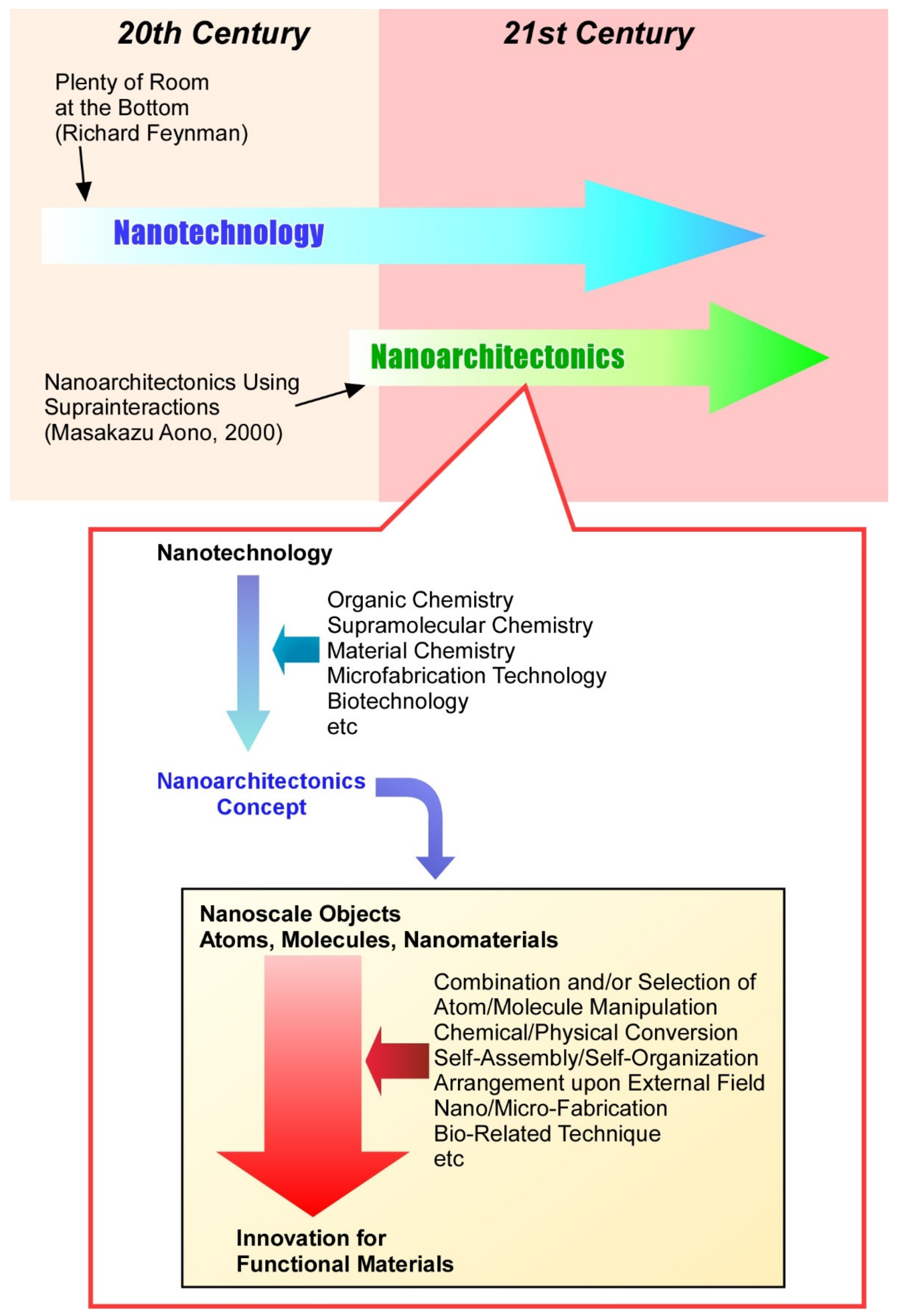
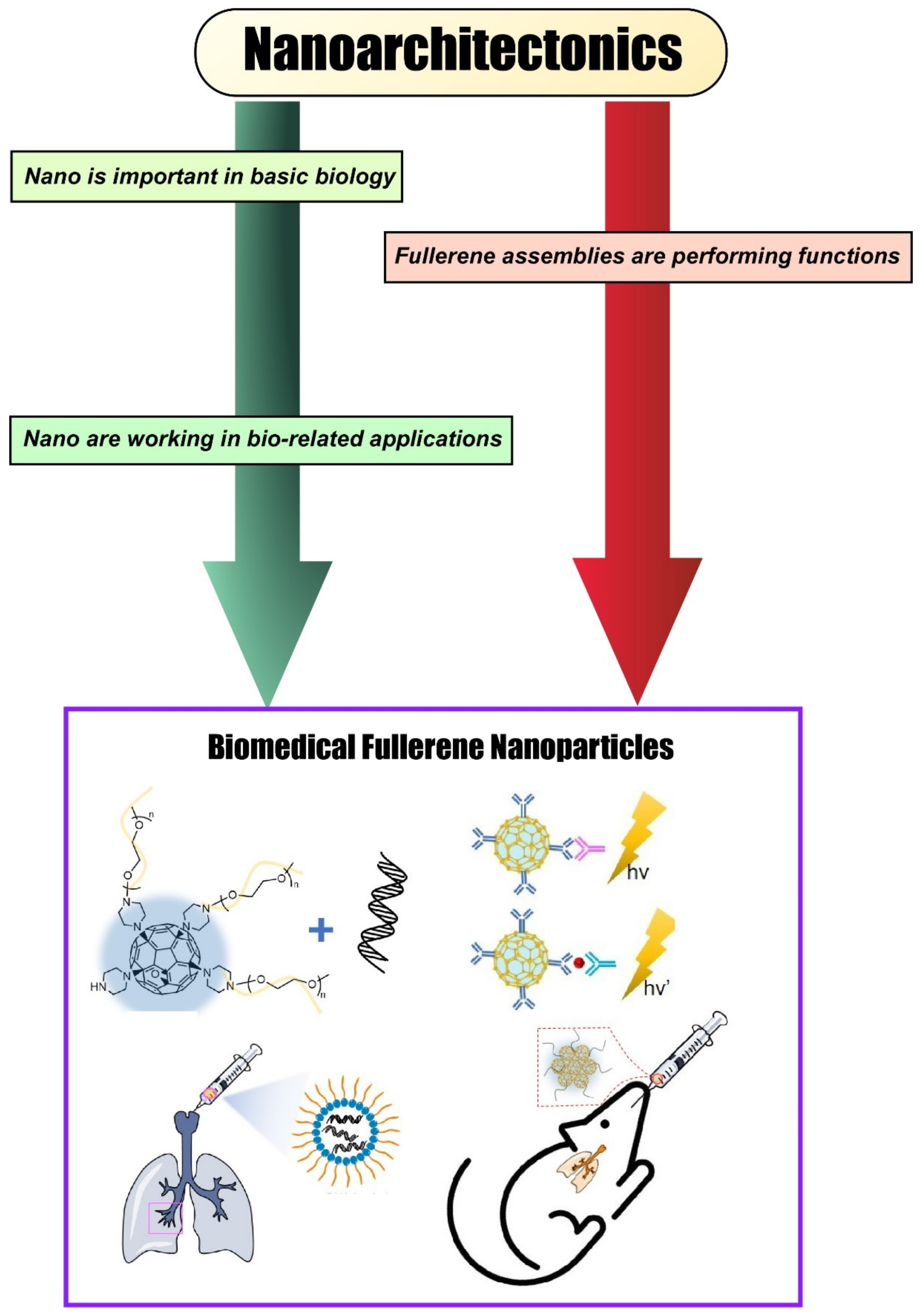

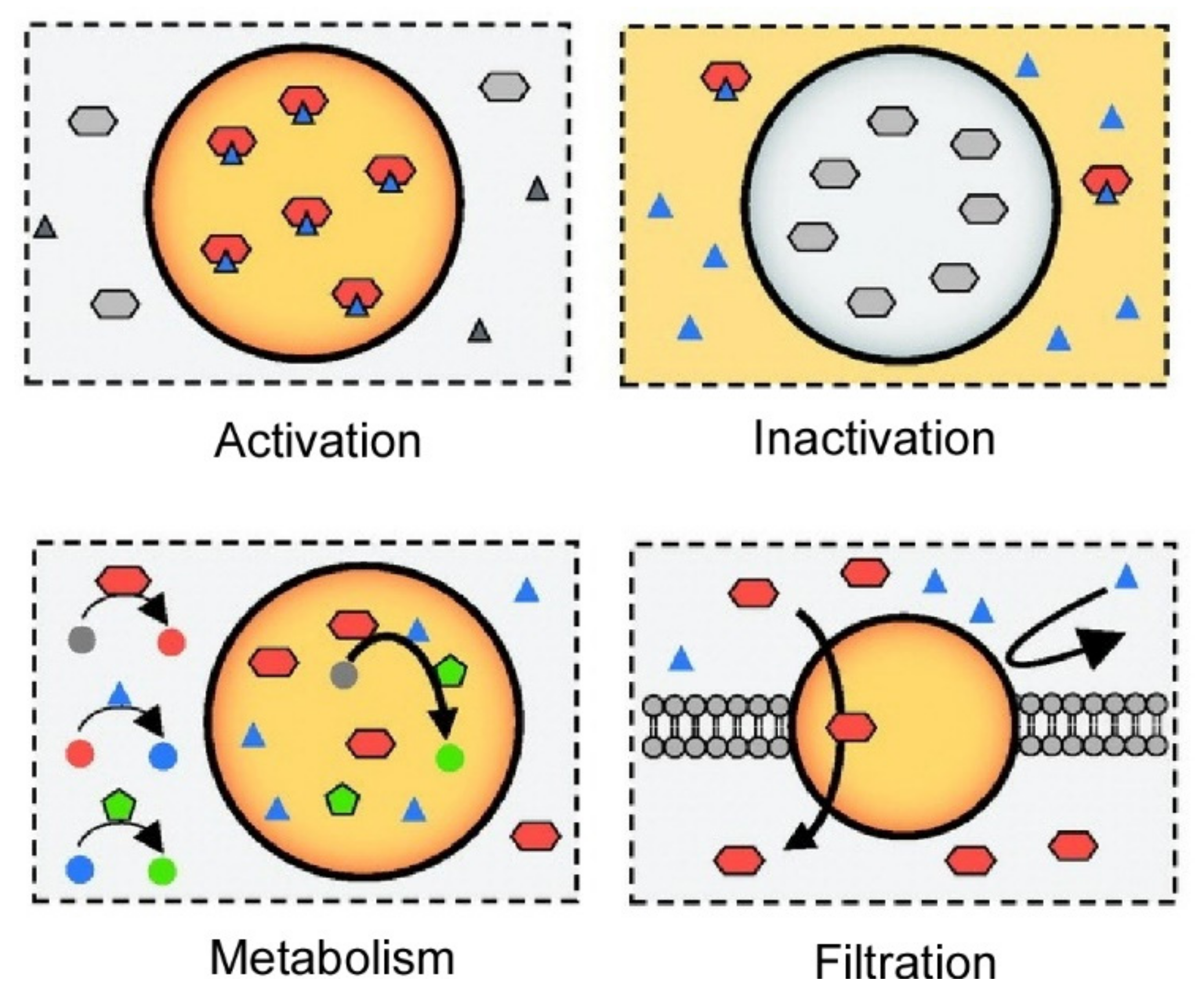
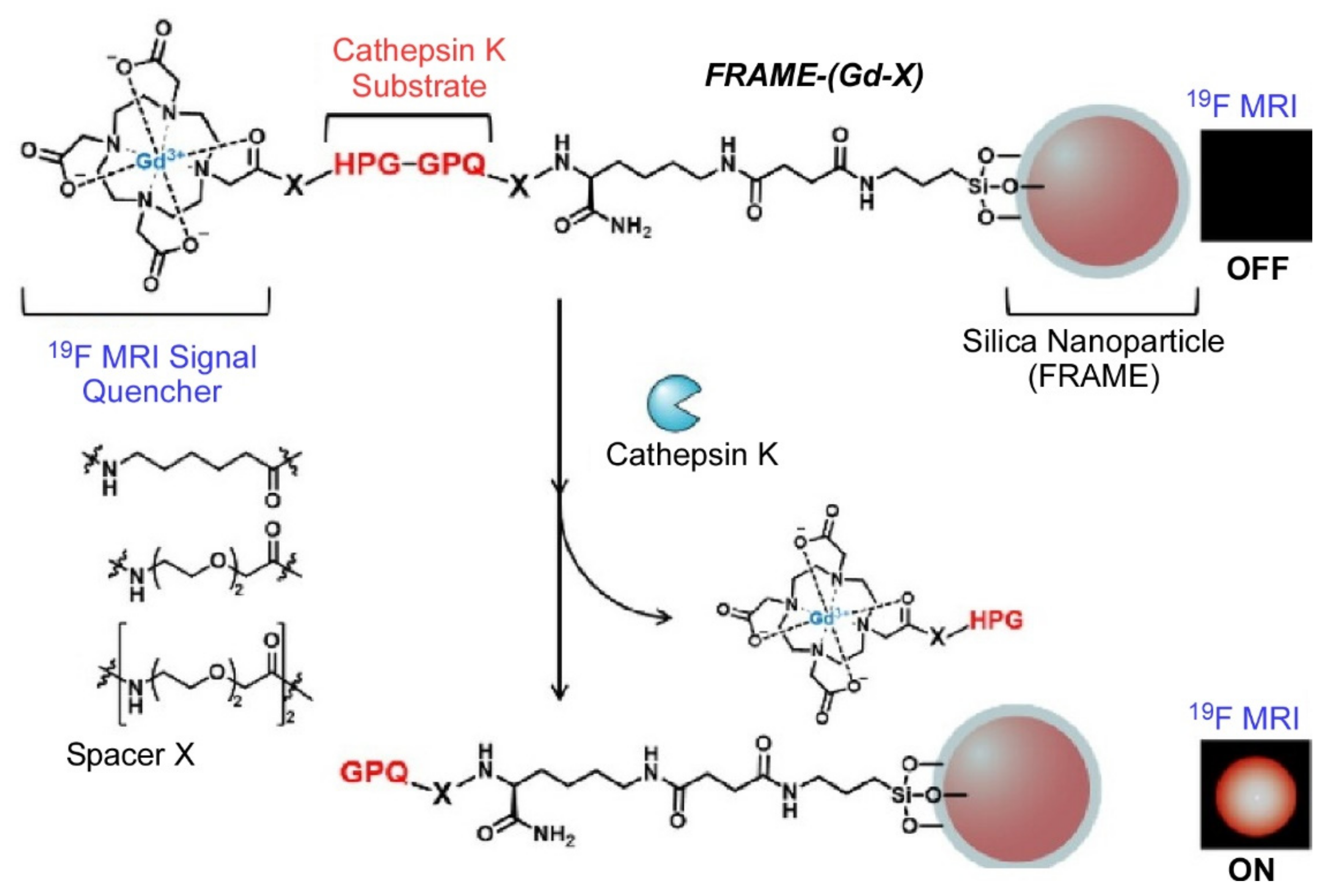
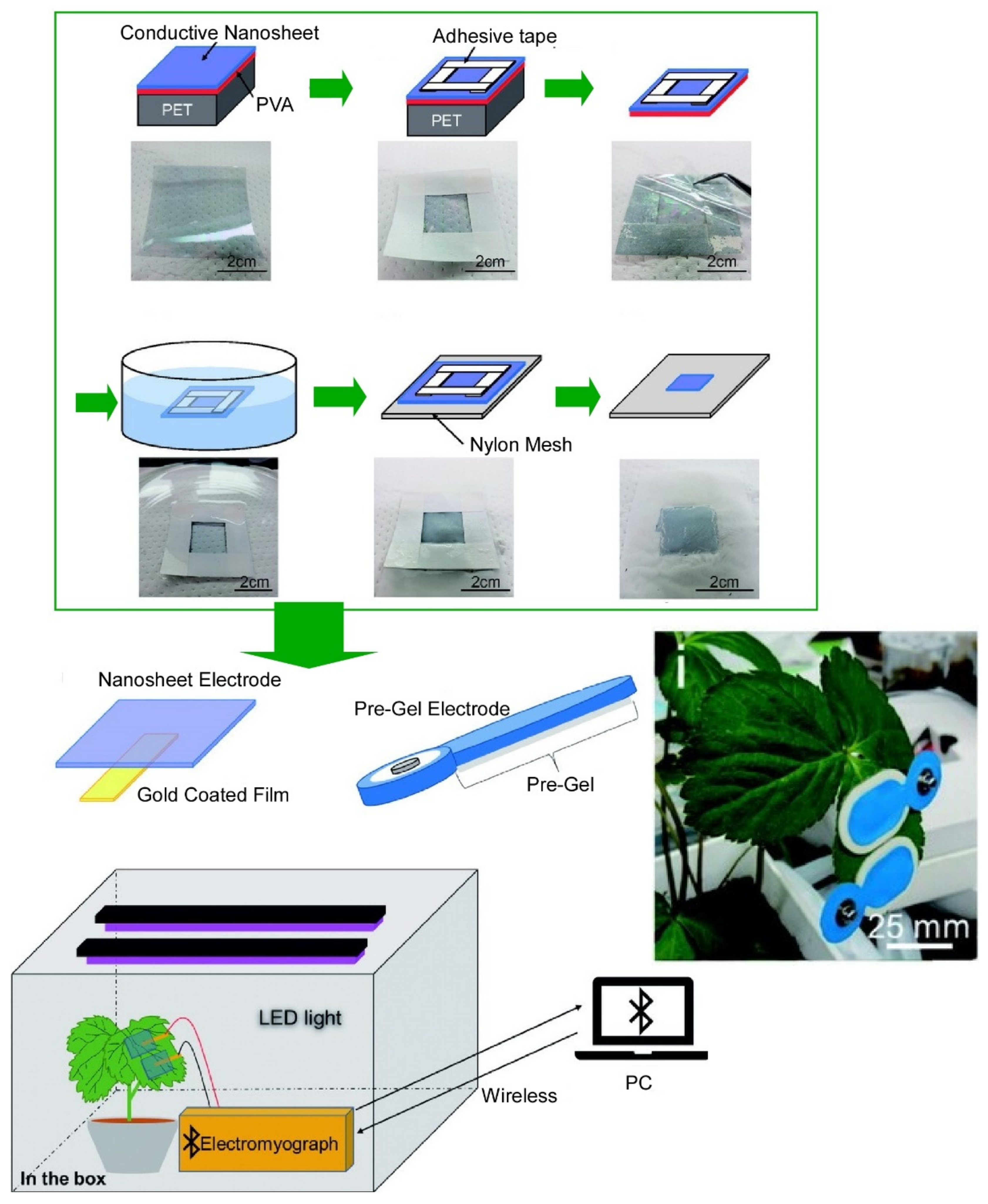
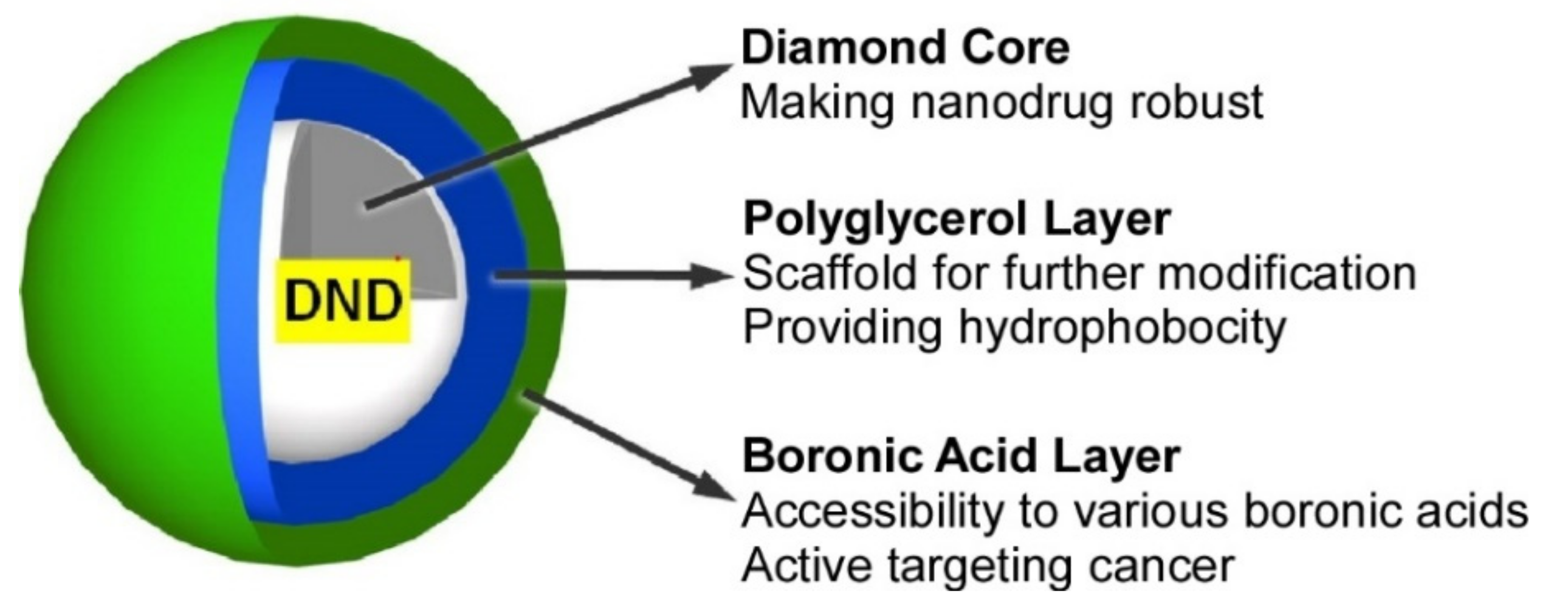

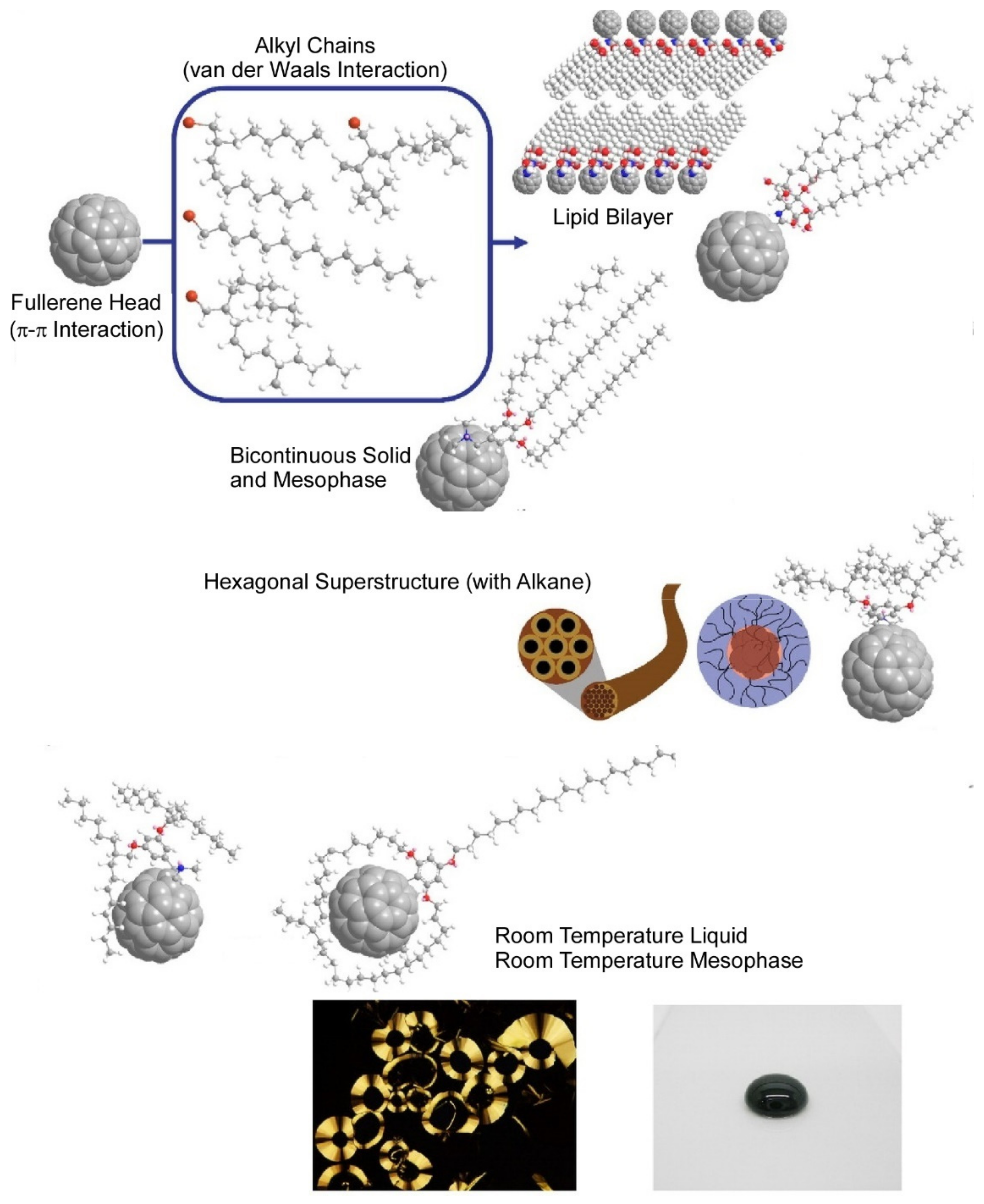
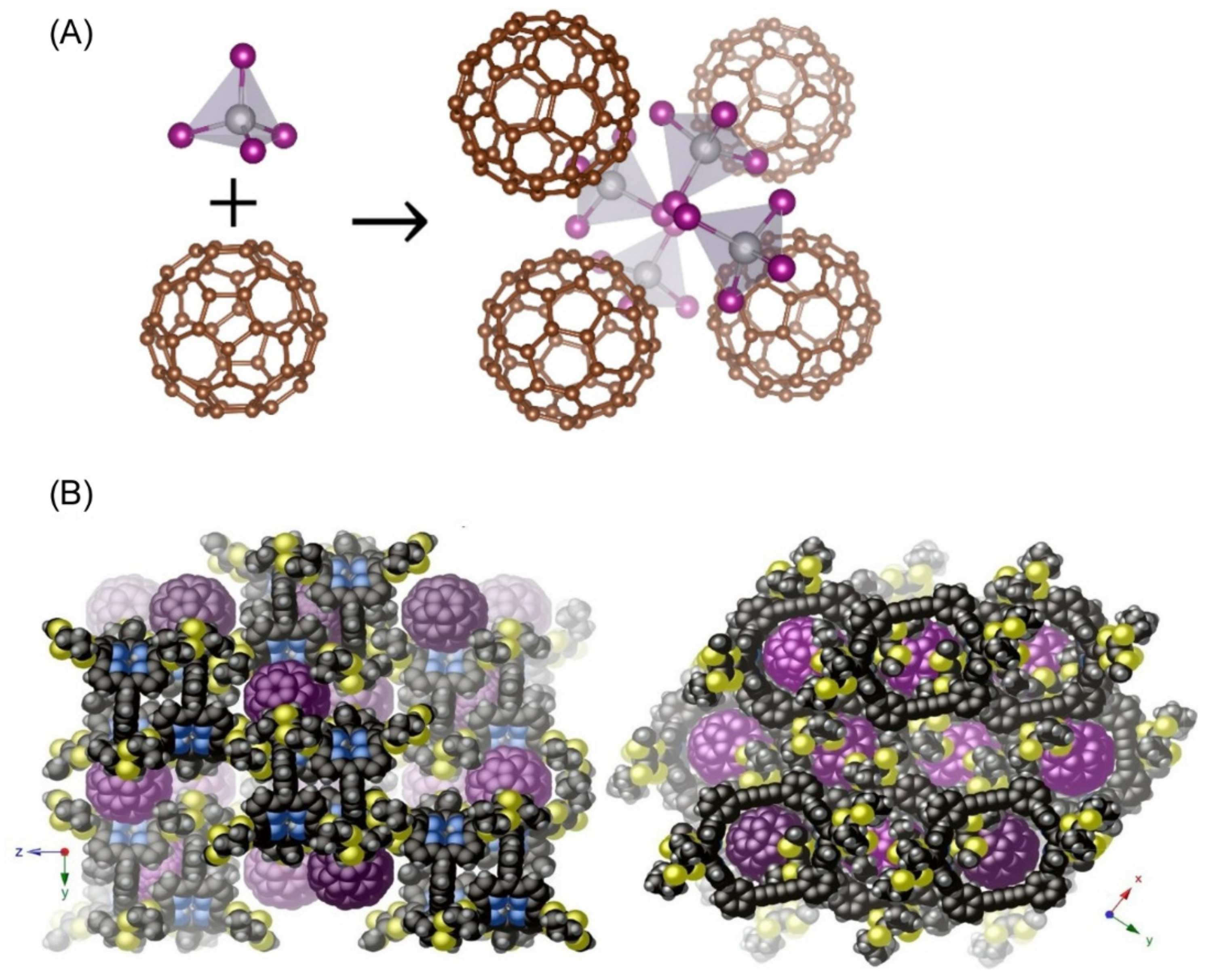
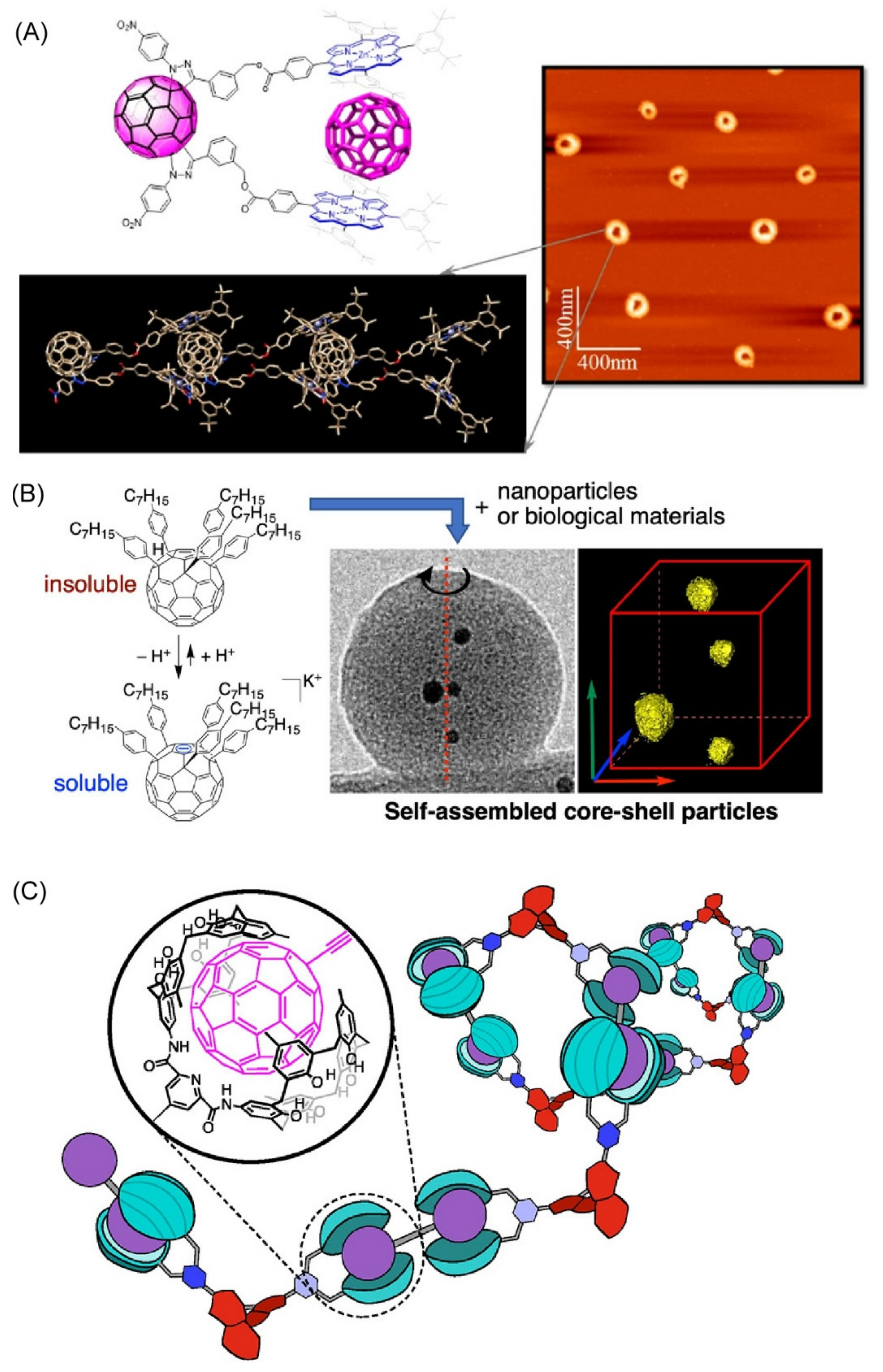

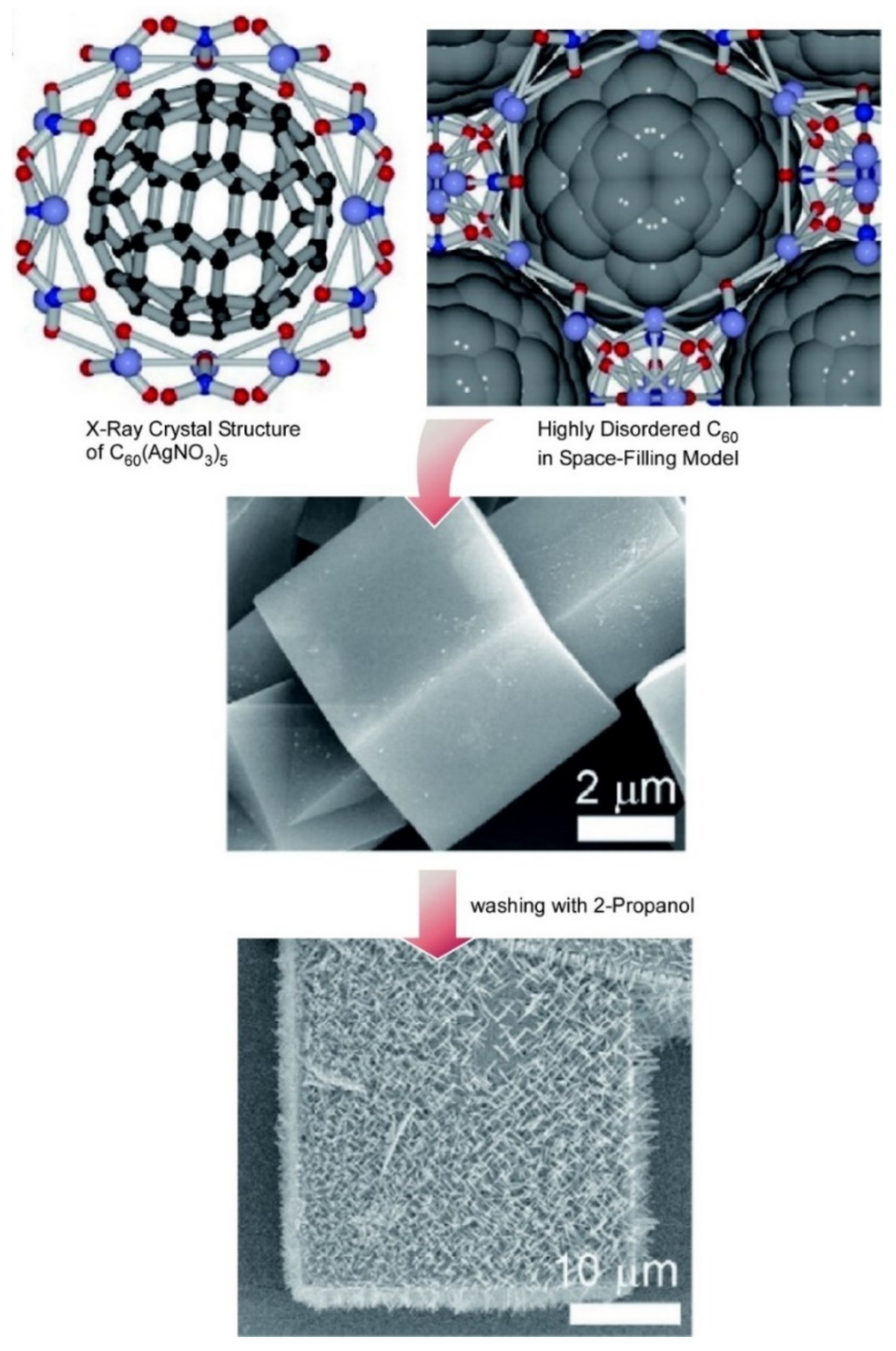



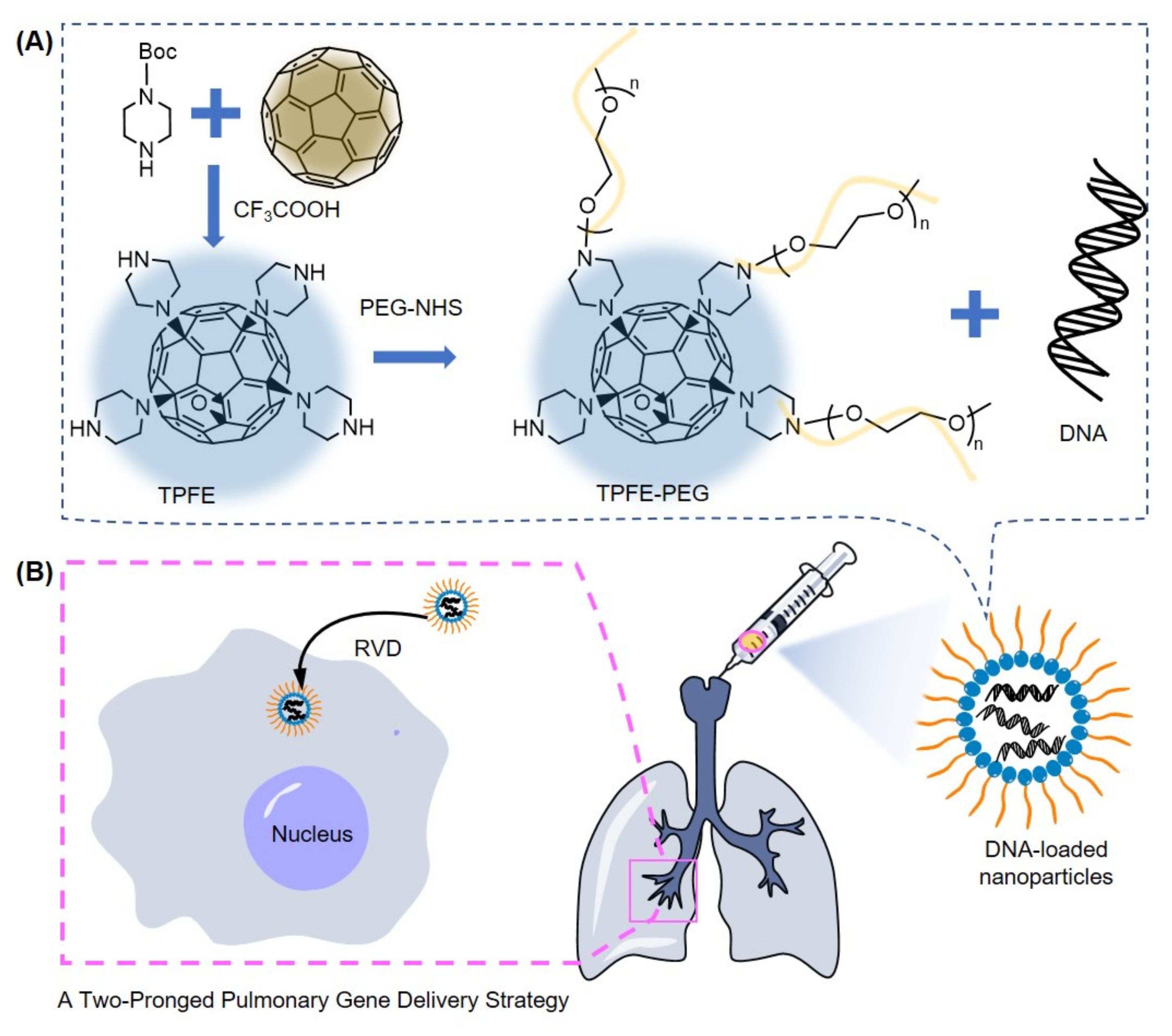
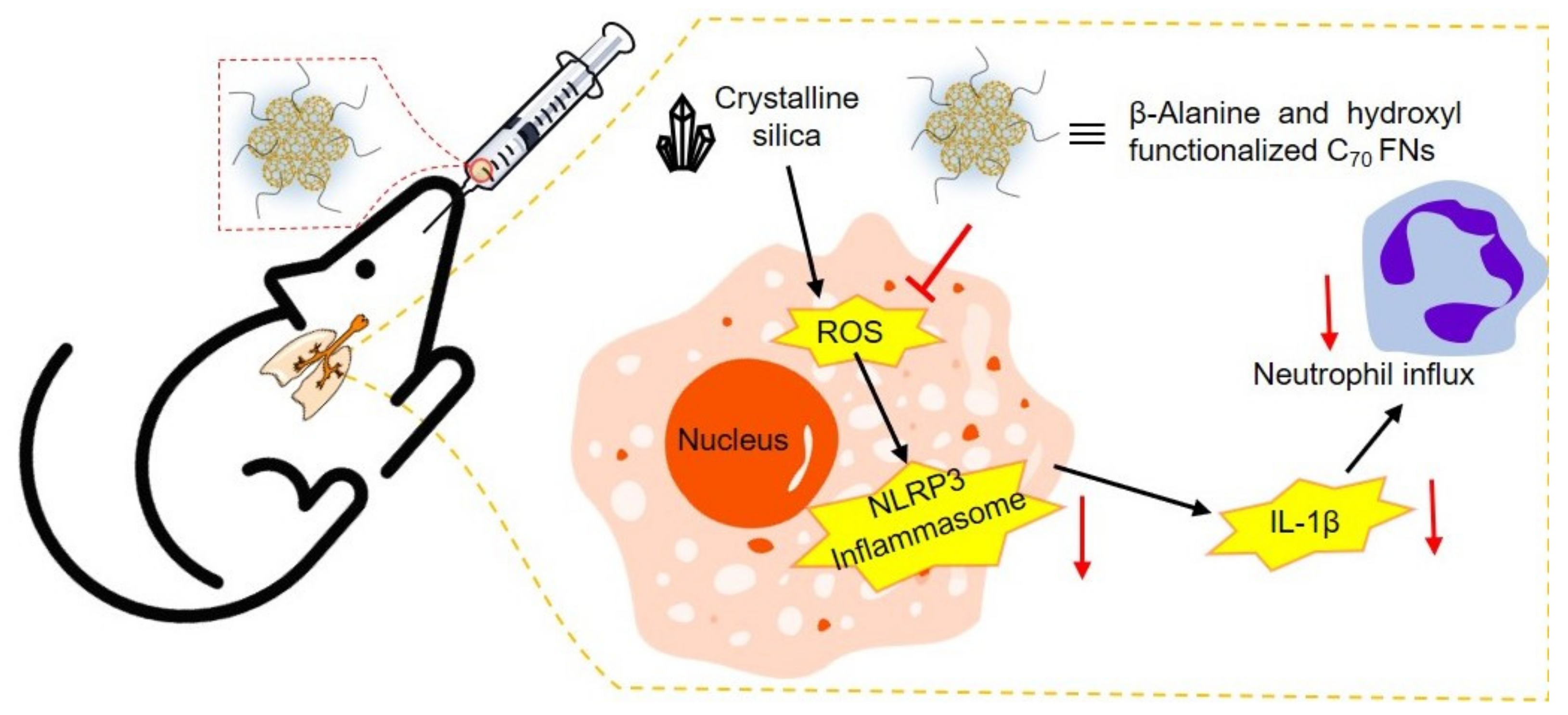
Publisher’s Note: MDPI stays neutral with regard to jurisdictional claims in published maps and institutional affiliations. |
© 2022 by the authors. Licensee MDPI, Basel, Switzerland. This article is an open access article distributed under the terms and conditions of the Creative Commons Attribution (CC BY) license (https://creativecommons.org/licenses/by/4.0/).
Share and Cite
Shen, X.; Song, J.; Kawakami, K.; Ariga, K. Molecule-to-Material-to-Bio Nanoarchitectonics with Biomedical Fullerene Nanoparticles. Materials 2022, 15, 5404. https://doi.org/10.3390/ma15155404
Shen X, Song J, Kawakami K, Ariga K. Molecule-to-Material-to-Bio Nanoarchitectonics with Biomedical Fullerene Nanoparticles. Materials. 2022; 15(15):5404. https://doi.org/10.3390/ma15155404
Chicago/Turabian StyleShen, Xuechen, Jingwen Song, Kohsaku Kawakami, and Katsuhiko Ariga. 2022. "Molecule-to-Material-to-Bio Nanoarchitectonics with Biomedical Fullerene Nanoparticles" Materials 15, no. 15: 5404. https://doi.org/10.3390/ma15155404






